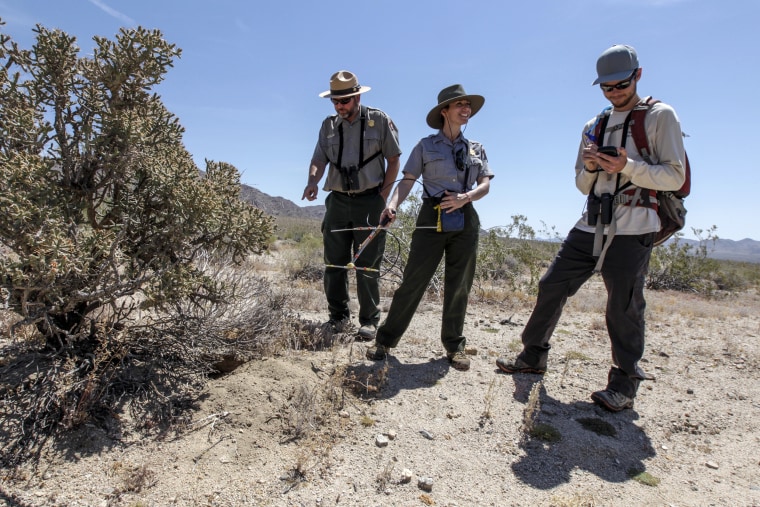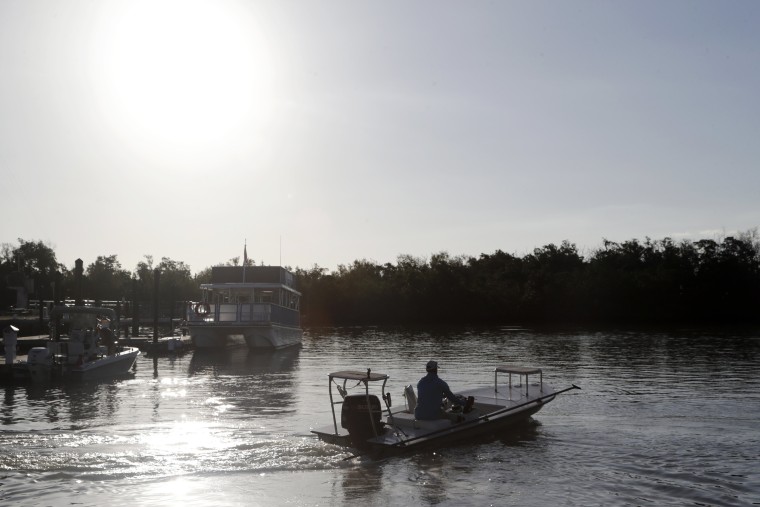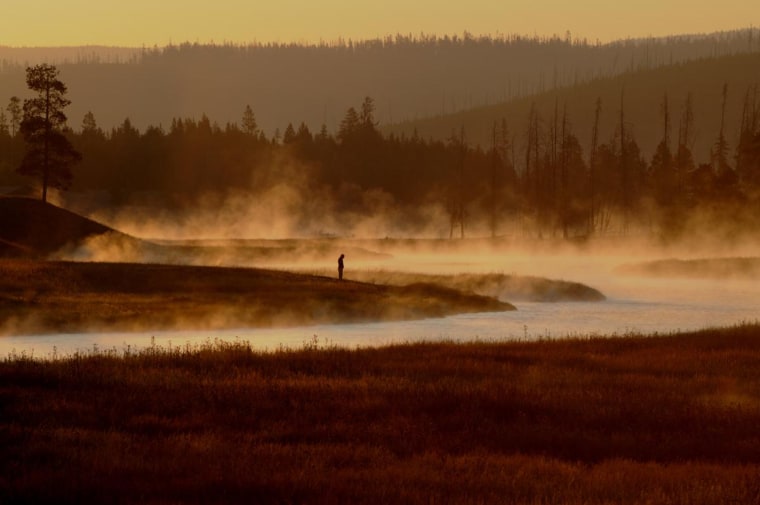On a sunny, 74-degree May morning in Joshua Tree National Park, wildlife ecologist Michael Vamstad pulled over when he spotted an unusual lump on the road. It turned out to be an Agassiz’s desert tortoise, an endangered species that Vamstad works to protect. This one was sunning itself on the warm tarmac of the busiest highway in the park, which is about 150 miles east of Los Angeles and saw 3 million visitors in 2019.
“I sat with that tortoise for 15 minutes, and he didn’t move,” Vamstad said. “He was just enjoying it.”

In mid-March, many of America’s national parks shut down to help slow the spread of the novel coronavirus. Wildlife quickly moved into the spaces now lacking the traffic jams and noisy hikers that have become a staple of parks across the country. Bears are grazing in meadows near California’s Yosemite Valley Visitor Center, and elk were undisturbed at the beginning of the spring calving season in Yellowstone National Park. After 327 million visitors to national parks in 2019, the shutdowns have given the park ecologies a moment to breathe.
That could all be changing soon, however.
On April 22, President Donald Trump called for parks to reopen and, in the past few weeks, various states have begun allowing some businesses to resume service. The National Park Service, which determines when national parks reopen, is considering each on a case by case basis, according to parks media officer Kathy Kuper. Staff at Yosemite have not said when the park will reopen, but Yellowstone, where a woman recently entered illegally and injured herself falling into a hot spring, has opened the gate and restored partial traffic. The Great Smoky Mountains, along the Tennessee-North Carolina border, partially reopened in early May, for instance, while the North Cascades, in Washington State, remains closed.
Full coverage of the coronavirus outbreak
Everglades National Park, in southern Florida, began the reopening process May 4, allowing visitors even as buildings in the park remain closed. Joshua Tree is taking the process more slowly and remains closed “until further notice,” but Vamstad says the staff wants visitors back as soon as it’s safe.

As protected areas, national parks are not under direct threat of destruction, but experts say bringing millions of people into a previously wild place will always have an impact. Too many campers in one place will compact the soil and can cause erosion or damage to plants in the area, the noise caused by crowds of people pushes some wildlife far from where they’d normally be found, and cars frequently hit animals on roads built to provide easy access to yet more people.
Steve McCool, a former professor of forestry at the University of Montana, has studied national parks and advised managers both in the U.S. and abroad for 50 years. He says national park visits have made a significant jump in the last decade. In 1904, 120,000 visited the country's national parks. In 1989, the number surpassed 100 million. In 2019, parks saw 327 million visitors.
“I went to the Great Smokys in April and we were in the middle of a traffic jam,” he said.
In the 15 years since Vamstad started working in Joshua Tree, the number of visitors has tripled from less than a million a year.
“The parking lot for Barker Dam was just completed when I started, and the grumbling among the staff was ‘Why’d they build it so big?’” Vamstad said. “Now it’s constantly full.”
Allyson Gantt, chief of communications for the Everglades, has worked in the park since 1995. When she started as an intern, visitors mostly came in the winter, but now they see more and more people in the spring and fall, and even the heat of the summer.
This spring, the animals have the place mostly to themselves. “This time of year is prime time for wildlife to congregate,” Gantt said.
When Vamstad saw the tortoise, the park had only been closed for two months. He says he is encouraged to see native vegetation growing through cracks in the pavement, and scat piles on the roads left by foxes and coyotes marking their territories.
“Where you have people, you generally don’t have tortoises,” he said. “They’re used to having these areas closed off to them, but this time they woke up and went to see if the grass was greener on the other side of the hill.”
Moments like these remind Vamstad that, while a portion of Joshua Tree sees millions of people a year, most of the park he loves receives almost no traffic. Now seeing the animals that usually inhabit the more wild parts of Joshua Tree wander into previously human-centered spaces is a reminder that the ecology is ready to take back the wheel — if humans give it the chance, he said.
Gantt thinks along the same lines. “The Everglades is 1.5 million acres and most of it is wilderness,” she said. “Most of it is only accessible by boat.”
McCool hopes the park closures can give managers a chance to plan new ways to reduce human impact and improve visitor experience. He says running a park can be chaotic, and it can be difficult to get ahead of the immediate problems that keep popping up.
Download the NBC News app forward full coverage of the coronavirus outbreak
“They’ve had all these bushfires to put out, and now they hopefully have space to think about the long term,” McCool said.
In Joshua Tree, Vamstad says projects are already in motion to give wildlife ample space. In past summers when there were more visitors, they’ve temporarily closed some trails to give bighorn sheep better access to watering holes, as an example.
“We’re not going to get smaller, other than being closed for a month and a half. We’ve got to incorporate that into our plan,” he said. “I’d look to see some big changes to Joshua Tree in the next few years.”
While he sees the park as a service to the American public and wants to open it as soon as it’s safe to do so, Vamstad has one ask: Drive slowly. There might be tortoises on the road.
CORRECTION (May 17, 2:45 p.m. ET): A previous version of this article misstated the direction of Joshua Tree National Park from Los Angeles. It is about 150 miles east of the city, not about 150 miles west.
